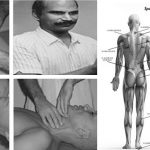Exercise Physiology
Exercise physiology Lab at SPARRC:
Exercise physiology plays an important role in the practice of clinical sports medicine. Exercise physiology research has identified important effects of exercise on the body’s systems, tissues, and cells. Objective here is to help athletes achieve peak performance, and nonathletes achieve better health through exercise. There is a continued demand for athletes at all levels to be better, faster, and stronger and it now met using state of the techonogy. At SPARRC we use various tools and techinuques. CPET is one such solution.
Cardiopulmonary exercise testing (CPET), also known as cardiopulmonary exercise stress testing, is a non-invasive tool that provides a comprehensive evaluation of exercise responses involving the cardiovascular, pulmonary, hematopoietic, neuropsychological, and musculoskeletal systems. Cardiopulmonary exercise testing entails measurements of oxygen uptake (VO2), carbon dioxide output (VCO2), minute ventilation (VE), and other variables in addition to a 12-lead electrocardiography (ECG), blood pressure (BP) monitoring and pulse oximetry. These data are gathered during a maximal symptom-limited incremental exercise test. In certain circumstances, an additional measurement of arterial blood gases may be used to assess pulmonary gas exchange. Measurement of expiratory gases during exercise allows estimation of functional capacity, grades the severity of the impairment, evaluates the response to interventions, tracks disease progression, and assists in differentiating cardiac from pulmonary limitations in exercise tolerance. Cardiopulmonary exercise testing may be carried out on a treadmill or bicycle ergometer. Resting measurements are made for 3 to 5 minutes; followed by 3 minutes of unloaded cycling as a warm-up period. The workload is then increased at a rate designed to allow reaching maximum work capacity in 8 to 12 minutes
Cardiopulmonary exercise testing (CPET), also known as cardiopulmonary exercise stress testing, is a non-invasive tool that provides a comprehensive evaluation of exercise responses involving the cardiovascular, pulmonary, hematopoietic, neuropsychological, and musculoskeletal systems. Cardiopulmonary exercise testing entails measurements of oxygen uptake (VO2), carbon dioxide output (VCO2), minute ventilation (VE), and other variables in addition to a 12-lead electrocardiography (ECG), blood pressure (BP) monitoring and pulse oximetry. These data are gathered during a maximal symptom-limited incremental exercise test. In certain circumstances, an additional measurement of arterial blood gases may be used to assess pulmonary gas exchange. Measurement of expiratory gases during exercise allows estimation of functional capacity, grades the severity of the impairment, evaluates the response to interventions, tracks disease progression, and assists in differentiating cardiac from pulmonary limitations in exercise tolerance. Cardiopulmonary exercise testing may be carried out on a treadmill or bicycle ergometer. Resting measurements are made for 3 to 5 minutes; followed by 3 minutes of unloaded cycling as a warm-up period. The workload is then increased at a rate designed to allow reaching maximum work capacity in 8 to 12 minutes






Victoria Adi
5 years agoI had no idea that exercise physiology can help us achieve better health through exercise training. Thank you Sparrc teleteam.